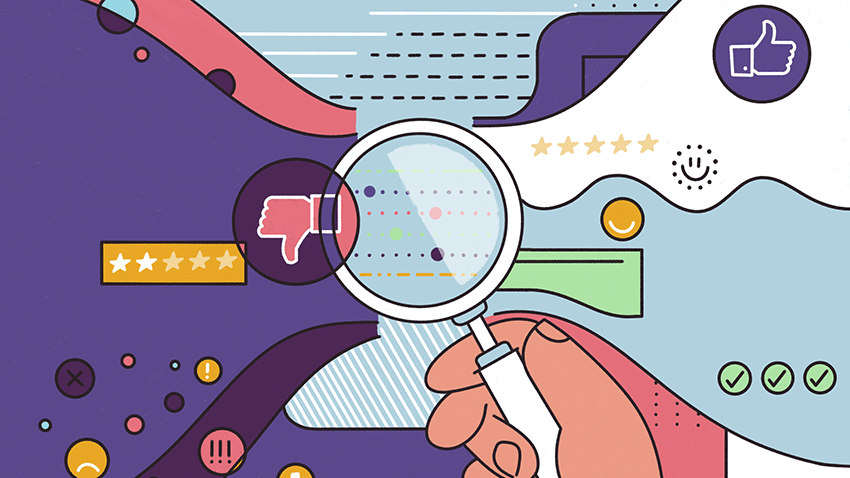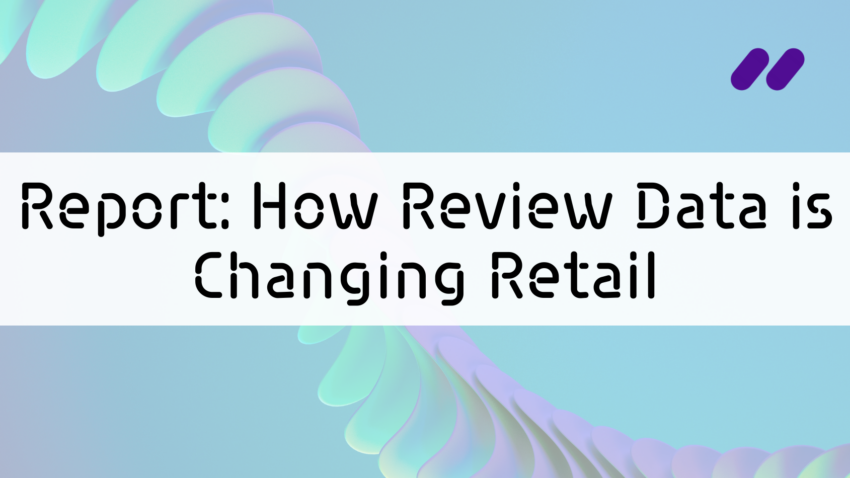The online shopping star system is starting to rival the Milky Way for complexity. Five stars doesn’t always mean an amazing product, and a one-star review may declare the product great but the customer service terrible. What we do know is that online reviews impact purchasing decisions for 93 percent of consumers and that customers’ negative experiences tend to outweigh positive ones—meaning that for every detractor who logs a one-star review online, you’ll need several promoters to bring up the average. A comprehensive star-system strategy includes going directly to the source of negative feedback.
While every retail company understands that they should leverage promoters for growth, your brand’s detractors have the potential to be just as valuable. You can go beyond damage control to actually change detractors’ minds about your product and even curtail future negative reviews. The route to a five-star average is paved with data.
AI data analysis speeds you down that path by focusing on customers’ own colloquial words and behaviours.
The Net Promoter Score opens a path to actionable insights on customer sentiment, especially among detractors. AI data analysis speeds you down that path by focusing on customers’ own colloquial words and behaviours, online and off. This advanced data analysis can show how one bad review might be a blip while the customer’s general sentiment is positive—or it could reveal that negative feedback about customer service is part of a wider negative trend.
AI data analysis lets companies look deeply into customers’ overall experience with your brand, products and services. It searches through reviews to shine a light on detractors’ motivations and reasoning. With that information at hand, companies can swiftly start to turn negative reviews into positive outcomes.
The power of positive retail action
In the increasingly populated retail industry, the majority of companies feel they compete mostly on the basis of customer experience (CX). Even if a customer is unhappy with a product, a positive customer service interaction that offers an empathetic response to their concerns will boost a customer’s brand loyalty—whereas after one bad customer service experience, 81 percent of consumers are “highly likely” to switch to a competitor.
Data analysis looks at the reasoning behind detractors’ negative feedback. By digging deeper into those reasons, companies can uncover unique solutions and address those customers directly to turn detractors’ passion for products and services into a boost to brand reputation. This means putting more time and money into customer service, but the process can alleviate and even avoid expensive setbacks.
AI applications could improve performance 87 percent more than other analytics techniques.
The recent McKinsey report Notes from the AI frontier: Applications and value of deep learning found that in retail, AI applications could improve performance 87 percent more than other analytics techniques. In the case of detractors, data analysis of demographic information, past transaction data and social media monitoring allows companies to “craft more-successful win-back offers and to identify and go after the most profitable defectors.”
Open the feedback floodgates
“To avoid losing customers because of a bad experience, you need to make it easy for them to complain,” say the small business marketing specialists at allBusiness.com, adding that among customers who complain, 56 to 70 percent will do business with a company again if the complaint is resolved —and if the complaint is resolved quickly, that number jumps to 96 percent.
To retain customers, companies need to feature multiple ways for customers to get in touch with them and ensure that customers feel listened to when they do provide feedback. Next, meet the exact needs that customers have expressed. Data insights derived from multiple modes of feedback provide a more accurate picture of why customers are complaining and what they’re looking for in a response.
You need to make it easy for customers to complain.
To further boost the strength of AI data analysis, data should be gathered from multiple sources—online reviews, NPS surveys, in-store conversations, emails, calls to service centres, customer chat logs and so on—and across company departments. With more modes of feedback, companies can hear from more people and respond in a personalized way that minimizes the number of customers who could become detractors.
More companies are forging AI-CX partnerships
With the rise of omnichannel shopping, the personalization of retail experiences has reached an all-time high. When companies use insights from data analysis to guide the CX journey, they’re also able to identify and prioritize gaps “that can demonstrate value to leadership and detractors,” suggests a recent Deloitte article. The article argues that as customer experience has become more grounded in data—and therefore more personalized, contextualized and dynamic—the world of marketing is increasingly orchestrated by a partnership between chief marketing officers and technology organizations. Data analysis partnerships focused on experiential marketing make up a big part of this shift.
By applying AI data analysis within the realm of CX, marketing experts can pinpoint optimal brand experiences for a variety of customers, including detractors. AI data analysis also makes it possible to manage the impact of negative reviews by addressing marketing variables (such as product information, price, promotion and distribution) in tandem with business intelligence teams and other departments. Integrating AI data analysis into CX strategies kicks off a mindset shift with a new process that can broaden the scope of CX initiatives and contribute to more ambitious milestones and timelines.
With AI, marketing experts can pinpoint optimal brand experiences for a variety of customers, including detractors.
From data’s details to big-picture customer satisfaction
A recent Forrester report detailed the market research company’s survey of over 500 U.S. consumers who described their ideal, most memorable customer experience. Alongside that survey, the company asked over 200 B2C marketing decision-makers about the methodologies they use to understand their customers. Together, this information provides a picture of how data is currently being used to inform decision-making in CX.
The upshot: while big data is better than no data, small data—“a combination of VOC data, customer journey data, user focus groups, surveys, behavioural user experience data, etc.”—unlocks the why behind customer behaviour, including negative reviews and complaints. This data, analyzed effectively through AI tools, provides detailed insights for both marketing and business intelligence teams, bringing their efforts into better alignment so they can improve customer engagement.
In the end, more customers are satisfied through personalized experiences along their journey.
Qualitative data analysis helps your company decrease detractors through a big-picture, two-fold approach: 1) by linking departments and channels through their data, and 2) by grounding the data strategy in business use cases, ensuring that investments in data strategies are tied to business outcomes. When sales, digital and omnichannel, marketing, operations, supply chain, and employee voice all share information through an insight-based analytical platform, fewer customers fall through the gaps—and those that do stand a stronger chance of being won over again. In the end, more customers are satisfied through personalized experiences along their journey.


